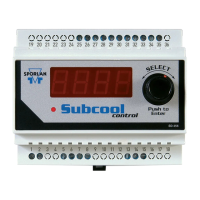Parker Hannifin
Appendix B External Power-Dump Resistor Selection - 91 -
Energy Dissipated in Motor Winding Resistance
Some energy is dissipated in the motor windings. Because the energy is
converted to wasted heat in the motor, it is referred to as copper losses.
The energy during deceleration can be derived from the inertia, deceleration
rate, motor resistance, and motor torque constant. If some of the parameters
are not known, the energy dissipated in the motor windings (E
W
) can
conservatively be assumed zero (Ø).
This is based on current and motor winding resistance.
()
DM
DT
LM
DMW
tR
tk
JJ
tRIE ⋅⋅
⎟
⎟
⎠
⎞
⎜
⎜
⎝
⎛
⋅
⋅+
⋅=⋅=
2
2
2
1
2
1
ω
Where
E
W
= energy dissipated in the motor windings (Joules) – copper losses
I = current through the windings (Amps
rms
)
R
M
= line to line motor resistance (Ohms)
t
D
= deceleration time (Seconds)
J
M
= rotor inertia (kg⋅m
2
)
J
L
= load inertia (kg⋅m
2
)
k
T
= motor torque constant (Nm/Amp
rms
)
ω = rotational speed in radians per sec (1 revolution/sec =
2⋅π⋅radians/sec)
Energy Dissipated in Load
The load dissipates energy through friction losses, viscous damping, and
other motor/load related losses. These losses are known as load losses. If
some of the parameters are not known, the energy dissipated in the load (E
L
)
can conservatively be assumed zero (Ø).
This can be derived from the torque required during the constant velocity
portion of the move profile, either measured or calculated.
DL
tTE ⋅=
ω
2
1
Where
E
L
= energy dissipated by the load (Joules) – load losses
T = torque at constant velocity (Nm)
ω = rotational speed in radians per sec (1 revolution/sec =
2⋅π⋅radians/sec)
t
D
= deceleration time (Seconds)

